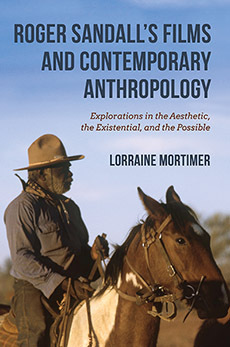[In a 1960s television series about western civilization, Sir Kenneth Clark said that we survived the Dark Ages after the fall of Rome only by “the skin of our teeth”. The text below freely adapts and abridges his narration, and is followed by a number of selections from Civilisation, A Personal View, the subsequent BBC book.]
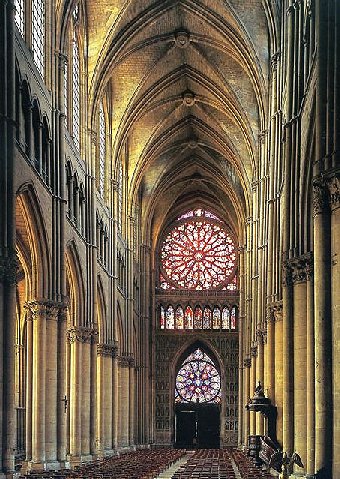
Reims Cathedral
What is civilisation? I don’t know. I can’t define it in abstract terms — or not yet. But I think I can recognise it when I see it; and here in France I am looking at it now. Ruskin said: “Great nations write their autobiographies in three manuscripts, the book of their deeds, the book of their words, and the book of their art. Not one of these books can be understood unless we read the two others, but of the three the only trustworthy one is the last.”
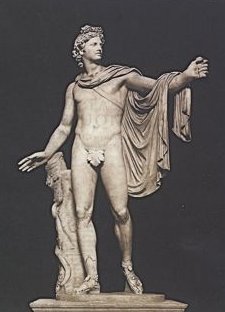 On the whole I think this is true. If I had to say which was telling the truth about society, a speech by a politician (or by some king or bishop), or the actual buildings put up in his time, I should believe the buildings and the art, whether it be Reims Cathedral or the Apollo of the Belvedere. A Hellenistic work now in the Louvre, the Apollo of the Belvedere was once the most admired sculpture in the world, and it was Napoleon’s proudest boast to have looted it from the Vatican.
On the whole I think this is true. If I had to say which was telling the truth about society, a speech by a politician (or by some king or bishop), or the actual buildings put up in his time, I should believe the buildings and the art, whether it be Reims Cathedral or the Apollo of the Belvedere. A Hellenistic work now in the Louvre, the Apollo of the Belvedere was once the most admired sculpture in the world, and it was Napoleon’s proudest boast to have looted it from the Vatican.
This doesn’t mean that the history of civilisation is merely the history of art — far from it. Great works of art can be produced in barbarous societies: in fact, the very narrowness of primitive society gives their ornamental art a peculiar concentration and vitality. At some time in the ninth century, in France, one could have looked down the Seine and seen the prow of a Viking ship — like the carving shown below on the left — coming up the river. It is a powerful work. But to the mother of a family trying to settle down in her little hut nearby it would have seemed as menacing as the periscope of a nuclear submarine today. Two other similar examples are from Polynesia and Africa.
|
|
|
|
I fancy that many people today would find these images more moving than the statue from antiquity in the Louvre. But I don’t think there’s any doubt that the Apollo embodies a higher state of civilisation. They all represent spirit beings (both the Apollo and the carvings from elsewhere) messengers from another world, the world of our own human imaginings.
But while to the Viking imagination this is largely a world of fear and darkness, ready to inflict horrible punishment for the smallest infringement of a taboo, to the Hellenistic imagination it is a world of light and confidence, in which the gods are like ourselves, only more beautiful, and descend to earth in order to teach men reason and the laws of harmony.
Greece and Rome
Western Europe inherited such an ideal. It had been invented in Greece in the fifth century before Christ and was without doubt the most extraordinary creation in the whole of history, so complete, so convincing, so satisfying to the mind and eye, that it lasted practically unchanged for over six hundred years. The same architectural language, the same imagery, the same theatres, the same temples, were found all around the Mediterranean.
Graeco-Roman civilisation stretched much further than that — right up to the Rhine, right up to the borders of Scotland. It must have seemed absolutely indestructible. And of course some of it never was destroyed. The Pont du Gard, in the south of France, was materially beyond the destructive powers of the barbarians arriving from the north and east.
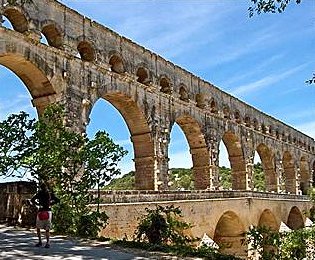 What exactly happened? What precipitated the fall of Rome? Thinking about this almost incredible episode tells one something about the nature of civilisation. It shows that however complex and solid it seems, it is actually quite fragile. It can be destroyed. What are its enemies? First of all fear — fear of war, fear of invasion, fear of plague and famine, all the things that make it simply not worthwhile building for the future, or even planning next year’s crops.
What exactly happened? What precipitated the fall of Rome? Thinking about this almost incredible episode tells one something about the nature of civilisation. It shows that however complex and solid it seems, it is actually quite fragile. It can be destroyed. What are its enemies? First of all fear — fear of war, fear of invasion, fear of plague and famine, all the things that make it simply not worthwhile building for the future, or even planning next year’s crops.
And also fear of the supernatural, which means that you daren’t question anything or change anything. The late antique world was full of meaningless rituals, mystery religions, that destroyed self-confidence. And then again boredom, the feeling of hopelessness which can overtake people even with a high degree of material prosperity.
Civilisation does require a modicum of material prosperity — enough to provide a little leisure. But it requires confidence far more. Confidence in the society in which one lives, belief in its philosophy, belief in its laws, and confidence in one’s own mental powers. Vigour, energy, vitality: all the great civilisations have had a weight of energy behind them. People sometimes think that civilisation consists in fine sensibilities and good conversation and all that. These may be among the agreeable results of civilisation, but they are not what make a civilisation, and a society can have these amenities and yet be dead and rigid.
Islam
In the aftermath of Rome, civilisation might have drifted downstream for a long time, but in the middle of the seventh century there appeared a new force, with faith, energy, a will to conquer and an alternative culture: Islam. The early Christian Church had dissipated its strength in theological controversies. But Mahomet preached the simplest doctrine that has ever gained acceptance; and it gave to his followers the same invincible solidarity that had once directed the Roman legions. In a miraculously short time — about fifty years — much of the classical world was overrun. Only its bleached bones stood out against the Mediterranean sky.
Now the old source of civilisation around the shores of the Mediterranean was sealed off. And if western civilisation was to be renewed it would have to be on the harsh shores of the Atlantic. What a hope! People sometimes tell me that they prefer barbarism to civilisation. I doubt if they have given it a long enough trial. They would soon find that barbarism is more boring by far.
Quite apart from discomforts and privations, there’s no escape. Very restricted company, no books, no light after dark, nothing to look forward to. On the bleak Atlantic shore the sea battered away; inland there were endless stretches of bog and forest. Yet it was to this unpromising region that Christian refugees from Islam came to the West, struggling on in search of the most inaccessible fringes of Cornwall, Ireland, and the Hebrides. In 550AD a boat-load of fifty scholars arrived at Cork, looking for anywhere that offered security for like-minded men.
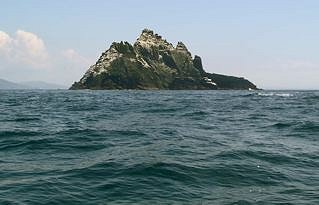 And what places they found! It is hard to believe, but for quite a long time — almost a hundred years in fact — western Christianity survived by clinging on to places like Skellig Michael, a pinnacle of rock eighteen miles from the Irish coast, rising seven hundred feet out of the sea.
And what places they found! It is hard to believe, but for quite a long time — almost a hundred years in fact — western Christianity survived by clinging on to places like Skellig Michael, a pinnacle of rock eighteen miles from the Irish coast, rising seven hundred feet out of the sea.
The wandering tribes that overran Europe as Rome declined brought a cultural and physical impoverishment that seems astonishing. Even allowing for the fact that most of their buildings were in wood, and so have vanished, the few surviving stone structures are pitifully humble and incompetent. It’s amazing they couldn’t do better — but the wanderers seem to have lost the impulse to make durable habitations.
Iona and Lindisfarne
Christian refugees needed more settled conditions, especially for the copying of books, and two or three parts of the British Isles offered, at least for a short interval, relative security. One of them was Iona, a place sacred to the memory of those holy men who for two centuries kept western civilisation alive.
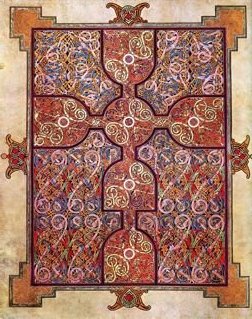
Lindisfarne Gospel
Almost the last work of art to be produced in Iona was the Book of Kells, but before it was finished the Abbot was forced to flee to Ireland. A new barbarism had arrived by sea: the Norsemen were on the move. A furore Normannorum, libera nos Domine — ‘From the fury of the Norsemen, O Lord, deliver us!” This prayer has an almost comic sound today. But between 800 and 1050AD the fury of the Norsemen was no laughing matter.
“If there were a hundred tongues in each head,” said a contemporary Irish writer, “they could not recount or narrate or enumerate or tell what all the Irish suffered of hardships and of injuring and of oppression in every house from those valiant, wrathful, purely pagan people.”
The invaders were almost illiterate, rapacious, and murderous. All the same, they have a place in European civilisation, because these marauding pirates were not merely destructive, and their spirit did finally contribute something important to the western world. It was the spirit of Columbus. They set out from a base and with unbelievable courage and ingenuity they got as far as Persia, via the Volga and the Caspian Sea, and they put their runic writing on one of the lions at Delos, and then returned home with all their loot, including coins from Samarkand and a Chinese Buddha.
Atlantic man
If one wants a 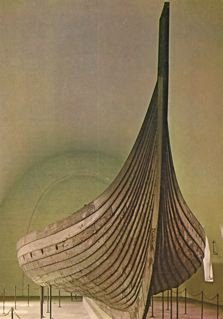 symbol of Atlantic man that distinguishes him from Mediterranean man, a symbol to set against the Greek temple, it is the Viking ship. The Greek temple is static and solid. The ship is mobile and light. When one considers the Icelandic sagas, one must admit that the Norsemen produced a culture. But was it a civilisation?
symbol of Atlantic man that distinguishes him from Mediterranean man, a symbol to set against the Greek temple, it is the Viking ship. The Greek temple is static and solid. The ship is mobile and light. When one considers the Icelandic sagas, one must admit that the Norsemen produced a culture. But was it a civilisation?
Civilisation means something more than energy and will and creative power: something the Vikings hadn’t got, but which, even in their time, was beginning to reappear in Western Europe. How can I define it? Well, in brief, it was a sense of permanence. The wanderers and the invaders were in a continual state of flux. They didn’t feel the need to look forward beyond the next season or the next voyage or the next battle. And for that reason it didn’t occur to them to build stone houses, or to write books.
Almost the only stone building that has survived from the sixth century AD is the Baptistry at Poitiers. It is pitifully crude. The builders tried to use some of the elements of Roman architecture — capitals, pediments, pilasters — but had forgotten their original intention. But at least this miserable construction was meant to last. It isn’t just a tent. Civilised man, or so it seems to me, must feel that he belongs somewhere in space and time; that he consciously looks forward and looks back. And for this purpose it is a great convenience to be able to read and write.
For five hundred years this achievement was rare in Western Europe. It is a shock to realise that during all this time practically no lay person, from kings and emperors downwards, could read or write. Charlemagne learnt to read, but he could never write. He had wax tablets beside his bed to practise on, but said he couldn’t get the hang of it. Alfred the Great (849-900AD), who was an exceptionally clever man, seems to have taught himself to read at the age of forty, and was the author of several books, although they were probably dictated in a kind of seminar.
Great men, even ecclesiastics, normally dictated to their secretaries, as they do today and as we see them doing in tenth-century illuminations. Of course most of the higher clergy could read and write, and the pictures of the Evangelists, which are the favourite (often the only) illustrations of early manuscripts, become, in the tenth century, a kind of assertion of this almost divine accomplishment. But St Gregory, who was intensely devoted to scholarship, is credited with having destroyed whole libraries of classical literature lest they seduce men’s minds away from the study of holy writ.
And in this he was not alone. What with prejudice and destruction, it’s surprising that the literature of pre-Christian antiquity was preserved at all. In so far as we are the heirs of Greece and Rome, we got through by the skin of our teeth.
Civilisation and war
We also got through by fighting. All great civilisations, in their early stages, are based on success in war. The Romans were the best organised and most ruthless fighters in Latium. So it was with the Franks. Clovis and his successors not only conquered their enemies, but maintained themselves by cruelties and tortures remarkable even by the standards of the last thirty years. Fighting, fighting, fighting. And the fighting was necessary. Without Charles Martel’s victory over the Moors at Poitiers in 732AD, western civilisation might never have existed; and without Charlemagne’s tireless campaigning we should never have had the notion of a united Europe.
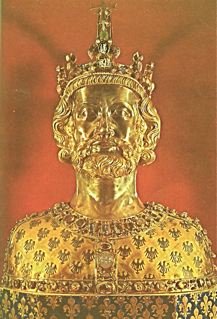 Charlemagne is the first great man of action to emerge from the darkness since the collapse of the Roman world. He became a subject of myth and legend. A magnificent reliquary made about five hundred years after his death expresses what the High Middle Ages felt about him, but the real man, about whom we know quite a lot from a contemporary biographer, wasn’t so far from the myth.
Charlemagne is the first great man of action to emerge from the darkness since the collapse of the Roman world. He became a subject of myth and legend. A magnificent reliquary made about five hundred years after his death expresses what the High Middle Ages felt about him, but the real man, about whom we know quite a lot from a contemporary biographer, wasn’t so far from the myth.
He was a tireless administrator. And with the help of an outstanding teacher and librarian named Alcuin of York, he collected books and had them copied. People don’t always realise that only three or four antique manuscripts of the Latin authors are still in existence: our whole knowledge of ancient literature is due to the collecting and copying that began under Charlemagne, and almost any classical text that survived until the eighth century has survived till today.
In copying these manuscripts his scribes arrived at the most beautiful lettering ever invented; also the most practical, so that when 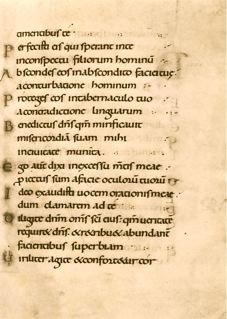 the Renaissance humanists wanted to find a clear and elegant substitute for the crabbed Gothic script they revived the Carolingian. And so it has survived, in more or less the same form, until the present day. Like most able men who have had to educate themselves the hard way, Charlemagne felt strongly the value of education, and in particular the importance of an educated laity. He issued a series of decrees to try to achieve it.
the Renaissance humanists wanted to find a clear and elegant substitute for the crabbed Gothic script they revived the Carolingian. And so it has survived, in more or less the same form, until the present day. Like most able men who have had to educate themselves the hard way, Charlemagne felt strongly the value of education, and in particular the importance of an educated laity. He issued a series of decrees to try to achieve it.
The lands he conquered — Bavaria, Saxony, Lombardy — were organised a good deal beyond the capacities of a semi-barbarous age. His empire didn’t survive him. But the old idea that he saved civilisation isn’t so far wrong, because it was through him that the Atlantic world re-established contact with the ancient culture of the Mediterranean world. There were great disorders after his death, but no more skin of our teeth. Civilisation had come through.
* * *
Selections from the 1971 edition of Civilisation, by Sir Kenneth Clark (BBC & John Murray)
Chartres
Chartres is the epitome of the first great awakening in European civilisation. It is also the bridge between Romanesque and Gothic, between the world of Abelard and the world of St Thomas Aquinas, the world of restless curiosity and the world of system and order.
Great things were to be done in the next centuries of high Gothic, great feats of construction, both in architecture and in thought. But they all rested on the foundations of the 12th century. That was the age which gave European civilisation its impetus.
Our intellectual energy, our contact with the great minds of Greece, our ability to move and change, our belief that God may be approached through beauty, our feeling of compassion, our sense of the unity of Christendom — all this, and much more, appeared in those hundred marvellous years between the consecration of Cluny and the rebuilding of Chartres. (From Chapter Two)
Urbino and the Renaissance
The discovery of the individual was made in early 15th century Florence. Nothing can alter that fact. But in the last quarter of the century the Renaissance owed almost as much to the small courts of northern Italy — Ferrara, Mantua and, above all, Urbino, a small remote town on the eastern perimeter of the Apennines. It could be argued that life in the court of Urbino was one of the high-water marks of western civilisation. The reason is that the first Duke of Urbino, Federigo Montefeltro, was not only a highly cultivated and intelligent man, and a passionate book collector, but also the greatest general of his day who could defend his dominions from the surrounding ruffians. (From Chapter Four)
Michelangelo and Julius II
People sometimes wonder why the Renaissance Italians, with their intelligent curiosity, didn’t make more of a contribution to the history of thought. The reason is that the most profound thought of the time was not expressed in words, but in visual imagery.
Two sublime examples of this truism were produced in the same building in Rome, not more than one hundred yards from each other, and during exactly the same years: Michelangelo’s ceiling of the Sistine Chapel and Raphael’s frescoes in the room known as the Stanza della Segnatura.
Both of them we owe entirely to Pope Julius II. For centuries writers on Michelangelo have criticised Julius for taking him off the tomb, on which he had set his heart, and putting him to work on the painting of the Sistine Ceiling, although he always said he hated the act of painting.
I think it was a stroke of inspiration. The original project for the tomb included almost forty marble figures, over life-size. How could Michelangelo ever have completed it? We know that he carved marble faster than any mason, but even with his heroic energy the tomb would have taken twenty years, during which time his mind was changing and developing.
And the fact that, on the Ceiling, he decided to illustrate themes, not simply to concentrate on single figures, freed him to extend his thoughts about human relationships and human destiny. (From Chapter Five)
Genius and circumstance
In studying the history of civilisation one must try to keep a balance between individual genius and the moral or spiritual condition of a society. However irrational it may seem, I believe in genius. I believe that almost everything of value which has happened in the world has been due to individuals.
Nevertheless, one can’t help feeling that the supremely great figures in western history — Dante, Michelangelo, Shakespeare, Newton, Goethe — must be to some extent a kind of summation of their times. They are too large, too all-embracing, to have developed in isolation.
Rembrandt is a crucial instance of this conundrum. It is very easy — indeed rather more convenient for the historian — to imagine Dutch art without him; and there was no one else in Holland remotely comparable to him — nothing like the group of poets and dramatists who preceded and accompanied Shakespeare.
Yet the very fact that Rembrandt was so immediately and overwhelmingly successful, and went on being successful — his etchings and drawings never went out of fashion — and that for twenty years almost every Dutch painter was his pupil, shows that the spiritual life of Holland needed him and so had, to some extent, created him. (From Chapter Seven)
Wren’s hospital at Greenwich
This room in the Royal Hospital at Greenwich, this shining enclosure of space, was designed by Sir Christopher Wren. It was built on the spur of a hill overlooking the old palace of Greenwich, and this too was rebuilt by Wren, transformed from a palace into a naval hospital.
How much of what we see is from his design is hard to say… But he certainly provided the plan; and the result is the greatest architectural unit built in England since the Middle Ages. It is sober without being dull, massive without being oppressive.
What is civilisation? A state of mind where it is thought desirable for a naval hospital to look like this and for the inmates to dine in a splendidly decorated hall. In fact the Painted Hall in Greenwich hospital is one of the finest rooms in England, and its ceiling, painted by Sir James Thornhill, is perhaps the best attempt made in England to imitate provincially the metropolitan glories of Roman Baroque. (From Chapter Eight)
Bach and his world
Bourgeois democracy, which had provided a background to Dutch painting in the seventeenth century, became partly responsible for German music; and it was a society more earnest and more participating than the Dutch connoisseurs had been.
This provincial society was the background of Bach. His universal genius rose out of the high plateau of competitive musical life in the Protestant cities of northern Germany. One can even say that it rose out of a family that had been professional musicians for one hundred years, so that in certain districts the very word ‘Bach’ meant a musician.
And Johann Sebastian’s life was that of a conscientious, somewhat obstinate, provincial organist and choirmaster. But he was universal. A great musical critic said of him: ‘He is the spectator of all musical time and existence, to whom it is not of the smallest importance whether a thing be new or old, so long as it is true.’ (From Chapter Nine)
The enlightenment smile
The busts of the successful dramatists of eighteenth-century Paris stand in the foyer of the Comédie Française, the national theatre of France, which, strange as it may seem to us today, did a great deal, for a hundred years, to promote good sense and humanity.
What witty, intelligent faces! And here is the wittiest and most intelligent of them all; in fact, at a certain level, one of the most intelligent men that has ever lived, Voltaire. In Houdon’s sculpture he is smiling — the smile of reason. Perhaps this state of mind originated with the French philosopher Fontenelle who, by living to be nearly a hundred, bridged the seventeenth and eighteenth centuries — the world of Newton and the world of Voltaire. He held a position known as ‘perpetual secretary’ of the Academy of Science.
Fontenelle told someone that he had never run and never lost his temper. A friend asked him if he had ever laughed. He said: ‘No, I have never made ha ha.’ But he smiled, and so do all the other distinguished writers, philosophers, dramatists and hostesses of the French eighteenth century: Crébillon, Diderot, Marivaux, D’Alembert. (From Chapter Ten)
Humanitarianism
The early reformers’ struggle with industrialised society illustrates what I believe to be the greatest civilising achievement of the nineteenth century, humanitarianism. We are so much accustomed to the humanitarian outlook that we forget how little it counted in earlier ages of civilisation. Ask any decent person in England or America today what he thinks matters most in human conduct: five to one his answer will be ‘kindness’.
But kindness is not a word that would have crossed the lips of any of the earlier heroes of this series. If you had asked St Francis what mattered in life, he would, we know, have answered ‘chastity, obedience and poverty’; if you had asked Dante or Michelangelo they might have answered ‘disdain of baseness and injustice’; if you had asked Goethe, he would have said ‘to live in the whole and the beautiful’.
But kindness, never. Our ancestors didn’t use the word, and they did not greatly value the quality — except in so far as they valued compassion. Nowadays, I think we under-estimate the humanitarian achievement of the nineteenth century. We forget the horrors that were taken for granted in Victorian England: the hundreds of lashes inflicted daily on perfectly harmless men in the army and navy; the women chained together in threes, rumbling through the streets in open carts on their way to transportation.
Credo
At this point I reveal myself in my true colours, as a stick-in-the-mud. I hold a number of beliefs that have been repudiated by the liveliest intellects of our time. I believe that order is better than chaos, creation better than destruction. I prefer gentleness to violence, forgiveness to vendetta.
On the whole I think that knowledge is preferable to ignorance, and I am sure that human sympathy is more valuable than ideology. I believe that in spite of the recent triumphs of science, men haven’t changed much in the last two thousand years; and in consequence we must still try to learn from history.
History is ourselves. I also hold one or two beliefs that are more difficult to put shortly. For example, I believe in courtesy, the ritual by which we avoid hurting other people’s feelings by satisfying our own egos.
And I think we should remember that we are part of a great whole, which for convenience we call nature. All living things are our brothers and sisters. Above all, I believe in the God-given genius of certain individuals, and I value a society that makes their existence possible. (From Chapter Thirteen)
In conclusion
I said at the beginning that it is lack of confidence, more than anything else, that kills a civilisation. We can destroy ourselves by cynicism and disillusion, just as effectively as by bombs. Fifty years ago W. B. Yeats, who was more like a man of genius than anyone I have ever known, wrote a famous prophetic poem.
Things fall apart; the centre cannot hold;
Mere anarchy is loosed upon the world,
The blood-dimmed tide is loosed, and everywhere
The ceremony of innocence is drowned;
The best lack all conviction, while the worst
Are full of passionate intensity.
Well, that was certainly true between the two world wars, and it nearly destroyed us. Is it true today? Not quite, because good people have convictions, rather too many of them. The trouble is that there is still no centre. The moral and intellectual failure of Marxism has left us with no alternative to heroic materialism, and that isn’t enough. One may be optimistic, but one can’t exactly be joyful at the prospect before us. (From Chapter Thirteen)
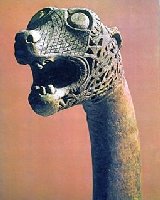
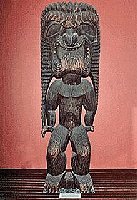
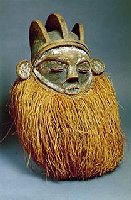

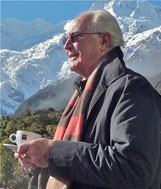 An Australian writer living in Sydney, Roger Sandall is the author of The Culture Cult (2001), a study of romantic primitivism and its effects. His work has appeared in a number of places including Commentary, The American Interest, Encounter, The New Criterion, The American, Sight and Sound, Quadrant, Art International, The New Lugano Review, The Salisbury Review, Merkur, Mankind, Visual Anthropology, and Social Science and Modern Society.
An Australian writer living in Sydney, Roger Sandall is the author of The Culture Cult (2001), a study of romantic primitivism and its effects. His work has appeared in a number of places including Commentary, The American Interest, Encounter, The New Criterion, The American, Sight and Sound, Quadrant, Art International, The New Lugano Review, The Salisbury Review, Merkur, Mankind, Visual Anthropology, and Social Science and Modern Society.